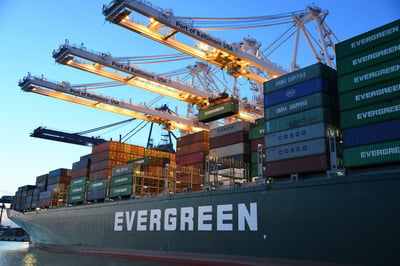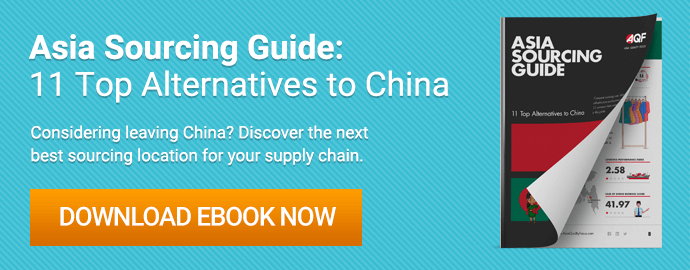 As the world enters the third year of a global pandemic, supply chains continue to face massive restructuring. Health regulations and global port congestion combine to manifest such occurrences as the Yantian Port partial shutdown, highlighting the fragile nature of the worldwide supply network in the face of such disruptions. Simultaneously, rising freight costs, unyielding inflation, and labor shortages add pressure on supply chain managers and professionals. Finally, economic strains and almost unmeetable demand affect consumer perceptions, further diminishing their already eroding trust. In combination, these factors spell multiple challenges facing supply chain executives in 2022.
As the world enters the third year of a global pandemic, supply chains continue to face massive restructuring. Health regulations and global port congestion combine to manifest such occurrences as the Yantian Port partial shutdown, highlighting the fragile nature of the worldwide supply network in the face of such disruptions. Simultaneously, rising freight costs, unyielding inflation, and labor shortages add pressure on supply chain managers and professionals. Finally, economic strains and almost unmeetable demand affect consumer perceptions, further diminishing their already eroding trust. In combination, these factors spell multiple challenges facing supply chain executives in 2022.
COVID-19 as an emerging supply chain disruptor
These bleak circumstances have naturally been predicted for some time. Very early, Deloitte had already identified that the pandemic “exposed the vulnerabilities of many organizations [as] China’s dominant role as the “world’s factory” means that any major disruption puts global supply chains at risk”. Noting that “more than 200 of the Fortune Global 500 firms have a presence in Wuhan”, they predicted that such companies were “likely to experience significant disruption”. PCW had also asserted that “[i]mpacts in many companies across many industries seem[ed] inevitable”, as they predicted supply chain strains; “overtime and expedited freight costs, as well as […] premiums to buy up supply and hold capacity”.
Distant relief
Despite their relative .jpeg?width=400&name=Top%20Challenges%20Facing%20Supply%20Chain%20Executives%20in%202022%20(2).jpeg) predictability, such disruptions could likely not be avoided. Alternative supply sources proved less resilient and more prone to fraud, but supply chain managers remained hopeful for 2022 relief. Optimistic analysts predicted the pandemic would have likely largely subsided.
predictability, such disruptions could likely not be avoided. Alternative supply sources proved less resilient and more prone to fraud, but supply chain managers remained hopeful for 2022 relief. Optimistic analysts predicted the pandemic would have likely largely subsided.
However, COVID remains an inhibiting factor that hampers the industry. The U.S. Transportation Secretary Pete Buttigieg now predicts that U.S. supply chain “challenges […] will continue into next year”. BDO agrees, as their Fall Board Pulse Survey finds almost one-third of directors concerned over supply chain disruptions as “their greatest business risk” ahead. Both identify identical initial challenges, with more emerging instead of diminishing over time.
Top challenges facing supply chain executives in 2022
Challenges ahead seem consistent with what early research and analysts predicted. Among many, whether industry-bound and local or global and overreaching, the top ones are arguably the following.
1. Continued port congestion
Perhaps most glaringly, global port congestions persist. We have written about this grave issue before, and local regulations and outbreaks have it resurface across the globe. Well within the holiday season now, staggering freight costs and increased demand only exacerbate the expected supply chain burden. Alibaba's air cargo charter assets did allow AliExpress to remain highly functional, delivery-wise, but that is only a notable outlier.
Thankfully, organic adaptations have produced some promising results. New warehouses and fulfillment centers outside of China's sourcing region offered some flexibility, while China itself also continues to expand available warehouses. This development seems to be alleviating supply chain burdens, offering some flexibility and risk mitigation against port shutdown occurrences.
2. Fraud and illegal imports
.jpeg?width=400&name=Top%20Challenges%20Facing%20Supply%20Chain%20Executives%20in%202022%20(3).jpeg) However, alternative supply chain solutions offer much less resilience as companies have continued to de-emphasize risk management. As such, the transfer of prohibited items and illegal imports is expected to rise considerably in 2022. This, analysts find, is much less due to a lack of legal knowledge and oversight and much more due to deliberate supply chain fraud.
However, alternative supply chain solutions offer much less resilience as companies have continued to de-emphasize risk management. As such, the transfer of prohibited items and illegal imports is expected to rise considerably in 2022. This, analysts find, is much less due to a lack of legal knowledge and oversight and much more due to deliberate supply chain fraud.
Indeed, this risk has long plagued the industry, as The Guardian finds – with massive benefits to fraudsters, all in all. "The counterfeit food game alone is worth $49bn a year", Oritain finds. While element analysis may help alleviate the issue somewhat, dire circumstances likely prevent a full-scale application for most. Instead, solutions will need to be incremental, and 2022 may not afford a strong focus on it. An initial, feasible solution may lie in stricter quality control, as such services have always been crucial toward efficient supply chain management.
3. Rising freight costs
In tandem with the above, rising freight costs spearhead the challenges facing supply chain executives in 2022. Our aforelinked article highlighted that, in August, “[a] container that used to cost $3,000 before the congestion can now surge five-fold to $15,000 per each”. Since then, Statista reports that rates continued to soar through September, reaching August levels in October before, fortunately, beginning to drop again in November.
One may attribute this phenomenon to many factors, most deeply rooted in the ongoing pandemic. A major one among them stems from demand, as “imports from Asia to the United States increased by about 40 percent in 2021 compared to 2019” while export volumes remained static. Thankfully, Statista echoes analysts in concluding that rates may improve if “container shipping becomes more resilient in the following months”, which now seems likely.
4. Inflation and labor shortages
An additional burden to .jpg?width=400&name=Top%20Challenges%20Facing%20Supply%20Chain%20Executives%20in%202022%20(4).jpg) supply chains, from production to shipping, stems from global inflation trends. Bloomberg forecasts a U.S. inflation to hit 6.8%, a far cry from initial, optimistic forecasts of 2%. This has led to massive price hikes across various products and services, including gas; “U.S. pump prices are about 50% higher than a year ago”. Overseas, China’s National Bureau of Statistics (NBS) reported a 13.5% increase in its producer price index. Fortune finds this trajectory worrying, and rightly so, as China is indeed “a critical link in global supply chains”.
supply chains, from production to shipping, stems from global inflation trends. Bloomberg forecasts a U.S. inflation to hit 6.8%, a far cry from initial, optimistic forecasts of 2%. This has led to massive price hikes across various products and services, including gas; “U.S. pump prices are about 50% higher than a year ago”. Overseas, China’s National Bureau of Statistics (NBS) reported a 13.5% increase in its producer price index. Fortune finds this trajectory worrying, and rightly so, as China is indeed “a critical link in global supply chains”.
At the same time, labor shortages across the world also persist, in part due to the pandemic as well. As demand mounts, especially over the holiday season, this factor poses a considerable burden. In the U.S., the Bureau of Labor Statistics (BLS) finds 10.4 million job openings still unmet, leaving unemployment rates at 4.6%. Jason Furman pinpoints the issue as “more on the supply side of labor […] than on the demand side of labor”, which spells a curious one among challenges facing supply chain executives in 2022.
5. Diminishing customer trust
Finally, as such disruptions continue, companies face a continued erosion of customer trust. Year after year, the Edelman Trust Barometer identifies diminishing customer trust in business as an institution, along with mostly diminishing market trust. As the ripple effects of such disruptions reach end customers, analysts predict this trend will only continue.
Forbes, for example, cites Forrester's assessment that "brands will lose 50% of sales on backordered items unless they compensate with [a] proactive customer experience". This is, of course, far less of a supply chain issue per se but remains a negative side effect to note. Still, supply chain managers may help alleviate the issue by focusing more strongly on thorough inspections and audits. Doing so can reduce the risk of defects, most notably, and ensure that delivered goods match the consumers’ quality expectations.
Conclusion
In summary, challenges facing supply chain executives in 2022 abound. Worldwide port congestion and sky-high freight costs stress supply chains at near-unprecedented levels, and the coming year will likely not see them reversed. Simultaneously, unyielding inflation, persisting labor shortages, and continued demand exacerbate the worldwide phenomenon. In combination, along with a higher risk of fraud due to laxer risk management, companies now risk further erosion of customer trust. As the new year comes, supply chain managers and executives will need to strike the golden balance between survival and efficiency, deliverability and resilience.







